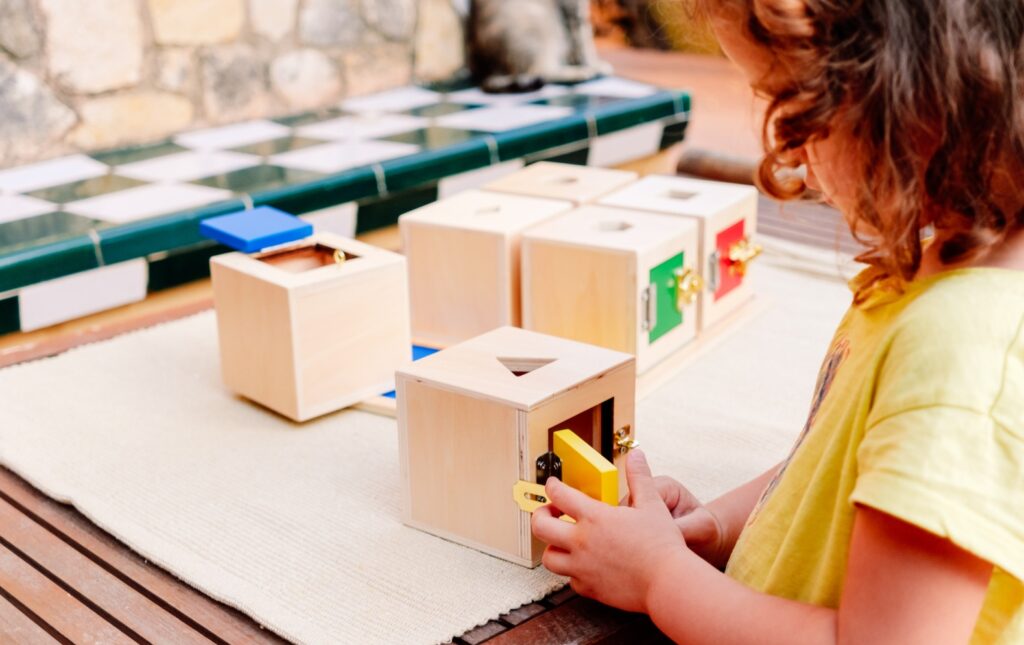Stimming, short for self-stimulation, refers to the repetitive behaviors that individuals with autism engage in. These behaviors can manifest in various forms, such as hand flapping, rocking, spinning, or tapping objects.
Unlike typical fidgeting, stimming behaviors in autism serve a sensory purpose beyond mere restlessness.
In an attempt to address stimming among autistic children, stimming toys have been invented. But what exactly do they do? Let’s take a look.

Role of Stimming Toys in Autism
Stimming toys play a vital role in managing sensory input for individuals with autism. They provide a means to address specific sensory needs, helping to reduce stress and anxiety and improve overall well-being. By offering a variety of tactile, visual, and auditory stimuli, stim toys cater to the unique sensory profiles of autistic individuals.
These toys can be particularly helpful in creating a safe and comfortable environment for individuals with autism, allowing them to explore and engage with sensory experiences in a controlled and enjoyable manner. Stim toys also serve as a valuable tool for self-expression, self-soothing, and self-regulation.
When selected and used appropriately, stim toys can have a positive impact on the lives of individuals with autism. They provide a means to navigate sensory challenges, enhance focus, reduce anxiety, and promote overall sensory well-being.
It is important to consider the individual preferences and needs of each person with autism when choosing stim toys, as personalized selection can optimize their effectiveness in supporting sensory regulation and overall sensory experiences.

Types of Stimming Toys
There are various options for stimming toys available to cater to different sensory needs and preferences. These toys are designed to provide sensory stimulation and help regulate the nervous system, aiding in releasing excess energy, reducing anxiety, and increasing focus for both autistic adults and children.
Let’s take a look at three types of stim toys commonly used in the autism community.
Fidget Toys
Fidget toys are a popular choice for individuals with autism, as they can serve both as stim toys and fidget toys. These toys offer a hands-on sensory experience, allowing individuals to engage in repetitive movements and tactile exploration.
Fidget toys come in a variety of forms, such as stress balls, squishy toys, and textured items. They provide a means of self-soothing and can help individuals with autism redirect their focus, reduce anxiety, and improve concentration.
Sensory Toys
Sensory toys play a crucial role in managing sensory input for individuals with autism. The sensory needs in autism are influenced by differences in processing sensory information compared to neurotypical individuals, leading to over- or under-reactivity to sensory input such as touch, taste, smell, sound, and visual input.
Sensory toys are designed to provide a calming or stimulating effect on the sensory system. These toys may include items like squishy balls, weighted blankets, textured objects, and vibration toys.

Musical and Visual Toys
Musical and visual toys can also be effective stim toys for individuals with autism. These toys provide sensory stimulation through auditory and visual experiences. Musical toys, like keyboards or small instruments, can allow individuals to explore sounds, rhythms, and melodies.
Visual toys, such as spinning tops or light-up toys, offer captivating visual effects that can engage and captivate attention. These toys can be particularly helpful for individuals who are visually oriented or have a strong interest in music.
How to Choose the Right Stim Toy
When it comes to selecting the right stim toy for individuals with autism, there are several considerations to keep in mind. Each person’s sensory needs and preferences are unique, so it’s important to choose a stim toy that suits their specific requirements.
Here are some factors to consider when selecting a stim toy:

When selecting stim toys for autistic children, it’s important to consider their individual preferences, sensory needs, and safety. It can be helpful to involve an occupational therapist who specializes in autism to guide the selection process. Additionally, ensuring the effectiveness and safety of stim toys is crucial. Regularly check for wear and tear, and always supervise children during play to prevent any potential hazards.
By understanding popular stim toys for autism and their benefits, parents, caregivers, and educators can provide individuals on the autism spectrum with the appropriate sensory tools to support their unique needs and promote engagement, focus, and self-regulation.
ABA therapy in Maryland can further enhance the therapeutic outcomes by addressing specific sensory preferences and promoting positive behavioral changes. Contact us to schedule a consultation or learn more information.




